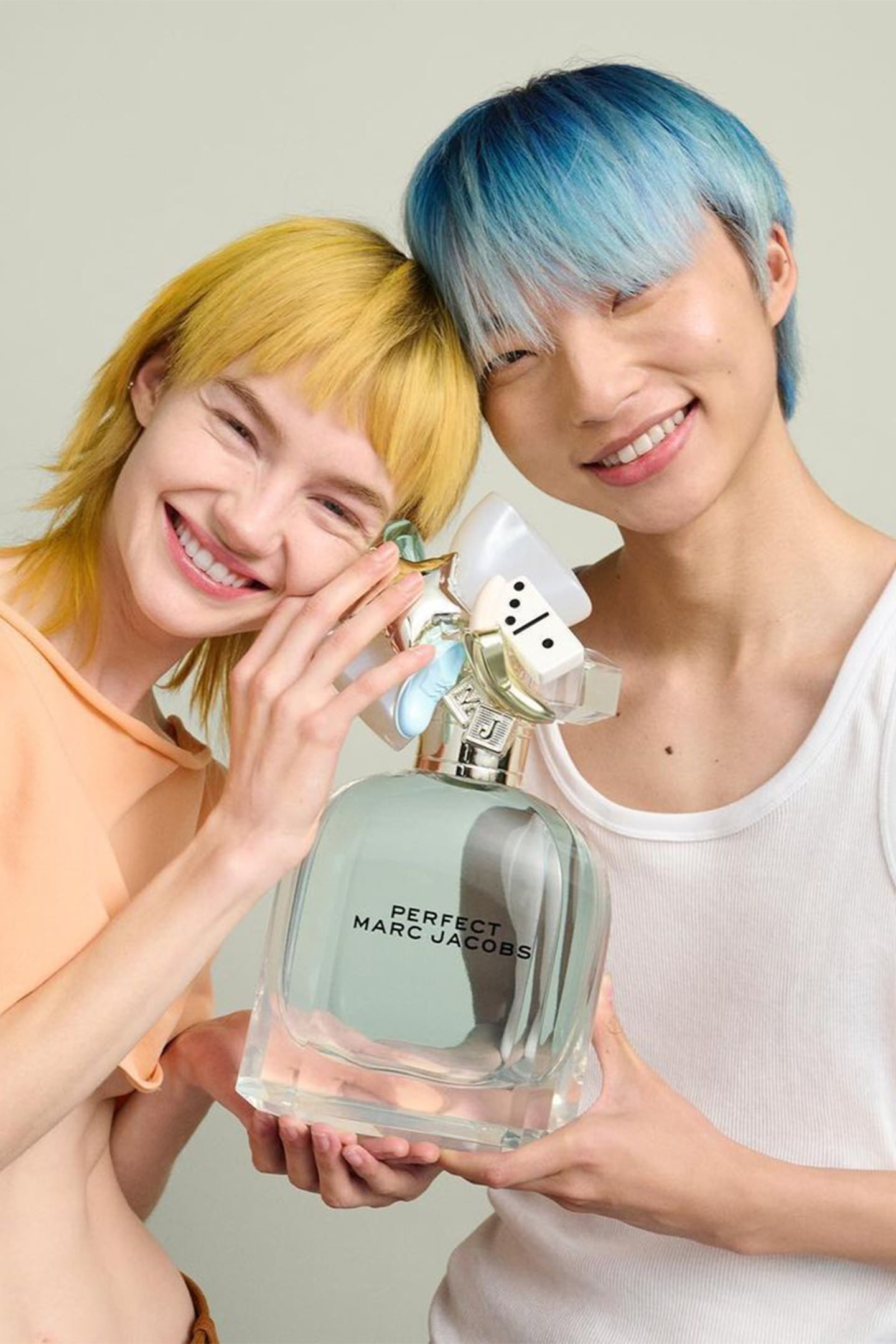
The Business of Fashion
Agenda-setting intelligence, analysis and advice for the global fashion community.

Agenda-setting intelligence, analysis and advice for the global fashion community.

Marc Jacobs Beauty is preparing a comeback, The Business of Beauty has learned, two years after its Velvet Noir mascara and other cult products were quietly pulled from shelves.
The return is part of an expanded partnership with Coty, the New York-based beauty giant that has produced the brand’s fragrances for two decades. That licence will now run at least through 2038 and include cosmetics for the first time. New products are likely to hit shelves in 2025, people familiar with the deal told The Business of Beauty.
The timing couldn’t be better for both parties.
In 2021, Marc Jacobs Beauty began discounting and offloading inventory as its agreement with LVMH-owned brand incubator Kendo came to a close. Fans were crushed — old product can still be found from unauthorised sellers on Amazon and Walmart’s marketplaces.
ADVERTISEMENT
Rumours have swirled about a potential relaunch ever since, though evidence has been thin on the ground: in May, the Instagram account @trendmood1 kicked off fresh speculation when it uncovered an empty Marc Jacobs Beauty landing page on Net-a-Porter (it has since been removed). In a statement, Coty chief executive Sue Y. Nabi noted that consumers have been “campaigning” for the brand’s return.
But there was a grain of truth to that speculation. Marc Jacobs could still make a case to be on the cutting edge of pop culture when it disappeared. Products were gender neutral and a favourite of makeup artists; campaigns featured celebrities like Jessica Lange, well before casting older women was a gimmick, and fresh faces like Kate Moss’ daughter Lila.
Products of all sorts bearing Marc Jacobs’ name are also cool again. Heaven, a celebration of 1990s grunge and rave, is a phenomenon for Gen-Z. In August, the line launched its first beauty collaboration with Bleach London for hair dye. The Perfect Marc Jacobs fragrance, also launched in 2020, was the biggest prestige fragrance debut across the US, UK, Canada and Australia that year, according to Circana.
“The Marc Jacobs brand has been very intelligent with Perfect and Heaven; there’s community, nostalgia, grunge, a little Y2K,” said Marina Mansour, vice president of beauty and wellness at Kyra, a tech-powered creator platform. “The creative direction and use of celebrity is just fucking cool.”
Coty, meanwhile, is trying to reposition itself as a seller of prestige beauty, as its portfolio of mass-market brands like Max Factor and influencer lines like SKNN by Kim Kardashian look past their peak. The company owns the licences to Calvin Klein, Burberry and other big, luxury beauty brands. But such deals put Coty at the mercy of its partners: Kering, for one, created an in-house beauty division earlier this year, headed by a longtime executive at Coty rival Estée Lauder. The timeline for Marc Jacobs Beauty’s relaunch gives Coty ample time to develop a new blockbuster in the space before the first of its big licences comes up for renewal in 2028 (Coty hasn’t specified which brand deal expires that year, but market speculation is it’s Gucci).
Marc Jacobs Beauty, in other words, is a collaboration between a hot brand and a beauty conglomerate with the resources and the desire to go big.

When Marc Jacobs Beauty launched in 2013, it was ahead of its time. The original 122-piece collection featured vampy lip lacquers, precision tip felt eyeliners called “Magic Marc’ers” and purple nail polish meant for both men and women. Bold, campy and sophisticated all at once, the line was the antithesis of the natural makeup embodied by brands like Bobbi Brown Cosmetics.
The brand was also among the first major launches by Kendo, the beauty incubator that at the time was just transitioning from a Sephora subsidiary into an independent entity inside LVMH. Marc Jacobs was the first fashion line the luxury conglomerate entrusted to Kendo, with a goal of using beauty to bring more shoppers into Jacobs’ orbit.
ADVERTISEMENT
Longtime Marc Jacobs collaborators David Sims and Katie Grand were tapped to photograph and style the backstage beauty-esque campaign, starring models like Edie Campbell. The ads appeared in nearly every September 2013 glossy. BoF reported at the time that the line was expected to generate more than $20 million in North American sales in its first year.
The line quickly found an audience, particularly for its Re(Marc)able foundation, though users were disappointed in its limited shade range.
“There was a fandom,” Mansour said.
Four years later, Fenty Beauty changed everything.
Rihanna’s beauty line, with its 40 shades of foundation, marked a sea change for how beauty brands were conceived and marketed, particularly in regard to non-white customers. It was also a game changer for Kendo and LVMH financially; sales reportedly topped $100 million in just 40 days. By 2021, Forbes estimated the brand was worth a “conservative” $2.8 billion.
Other Kendo brands were overshadowed by Fenty’s success, or were buried by the flood of new lines launched in the wake of its launch. Bite Beauty, known for its vegan ingredients, shuttered in 2022 after a “clean” rebrand two years prior. KVD Vegan Beauty has also fought for relevancy after its own revamp and its founder Katherine Von Drachenberg departing the brand in 2020.
Marc Jacobs Beauty had some major cultural moments even post-Rihanna.
At the 2019 Met Gala, Lady Gaga’s makeup look, complete with outsize, feathery gold and black eyelashes and white eyeliner, was courtesy of the makeup range and artist Sarah Tanno. But, like the designer himself, who in the late 2010s struggled with waning relevance and shelved plans for an initial public offering, there was a sense the line was never going to live up to its owners’ sky-high expectations.
ADVERTISEMENT
Beauty proved one of the keys to Jacobs’ creative and commercial resurgence. A 2021 Instagram post where the designer admitted to a facelift and calling for transparency in plastic surgery saw nearly 54.000 likes and resulted in a Vogue profile.
And even when the fashion brand was at its lowest, Marc Jacobs’ fragrances have remained a lucrative business, especially with younger shoppers. The Daisy Marc Jacobs fragrance is ranked as the sixth best-selling fragrance in the US, according to Circana.
The Daisy and Perfect lines also exploded on TikTok during the pandemic. According to Kyra, #PerfectMarcJacobs saw 191.5 million engagements (likes, comments, shares and saves) between March and May. The Marc Jacobs Fragrances TikTok account has just 23,000 followers.
Marc Jacobs’ fashion business has also been transforming with a democratic eye on the future. CEO Eric Marechalle, appointed in 2017, introduced the Gen-Z breakout Heaven in 2020 and a mid-priced mainline while scaling back runway collections.
In a statement Monday, Marechalle positioned the relaunch of Marc Jacobs Beauty as rewarding “the loyal fans … who have been enthusiastic in their wishes for its return.”
Beauty trends are cyclical (Y2K makeup and hair has already come back around), but if Marc Jacobs Beauty can recapture its zeitgeist-making first impression with Gen-Z, its 2.0 era might be even more transformational than its first go-round.
Designer Marc Jacobs, CEO Eric Marechalle and LVMH Fashion Group boss Sidney Toledano speak exclusively to BoF about what it took to get the brand back on track.
A licensing agreement with the manufacturer ends later this year, fuelling speculation about what’s next for the brand.

Priya Rao is Executive Editor at The Business of Beauty at BoF. She is based in New York and oversees BoF’s beauty and wellness coverage.
How not to look tired? Make money.
In a rare video this week, the mega-singer responded to sceptics and gave the public a look at what her beauty founder personality might be.
Request your invitation to attend our annual gathering for leaders shaping the global beauty and wellness industry.
Excitement for its IPO is building, but in order to realise its ambitions, more acquisitions and operational expenses might be required.